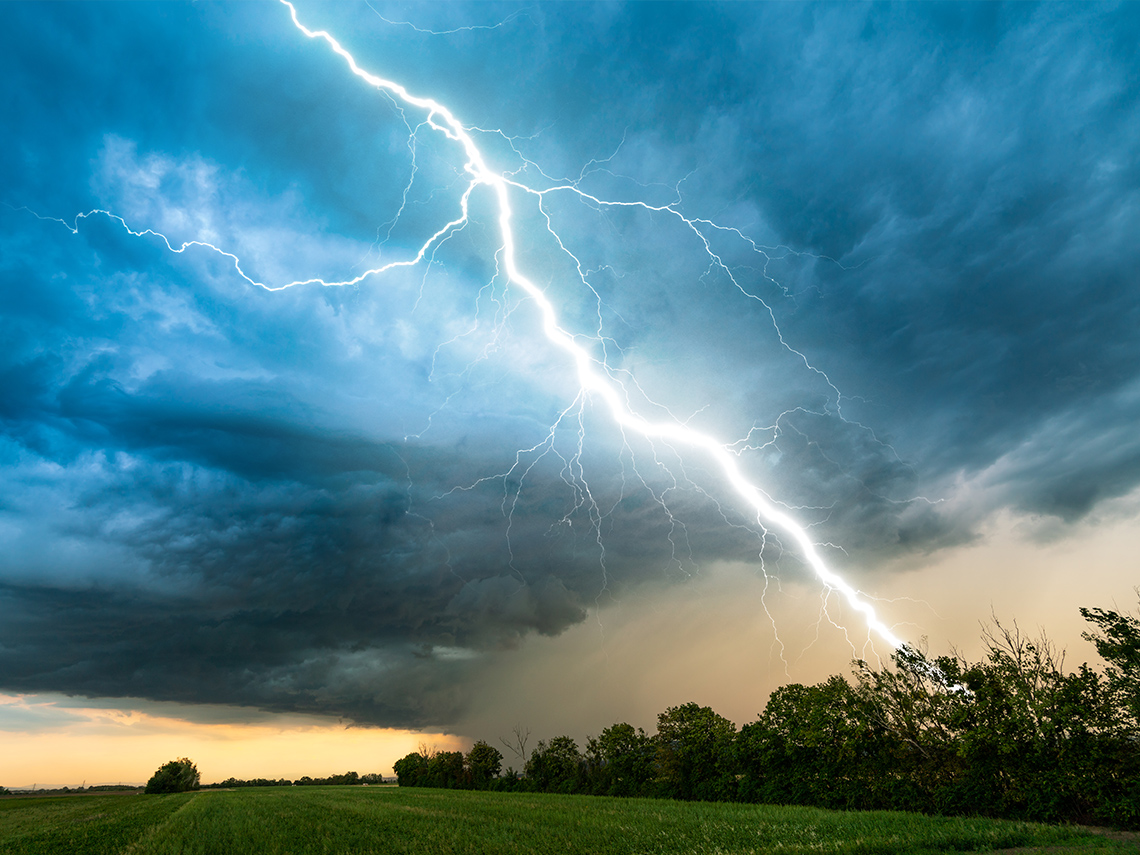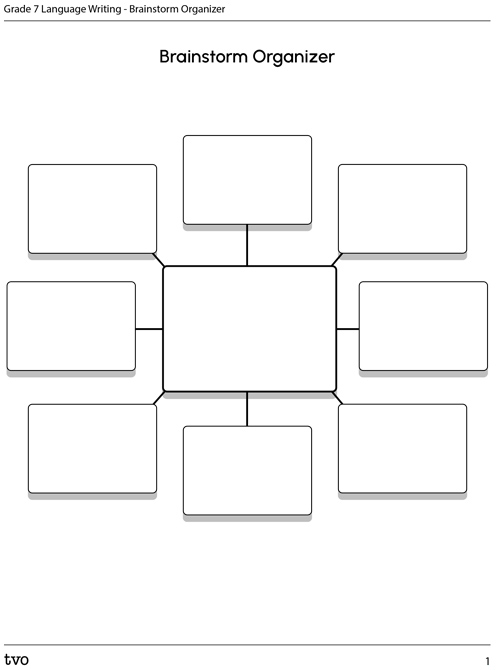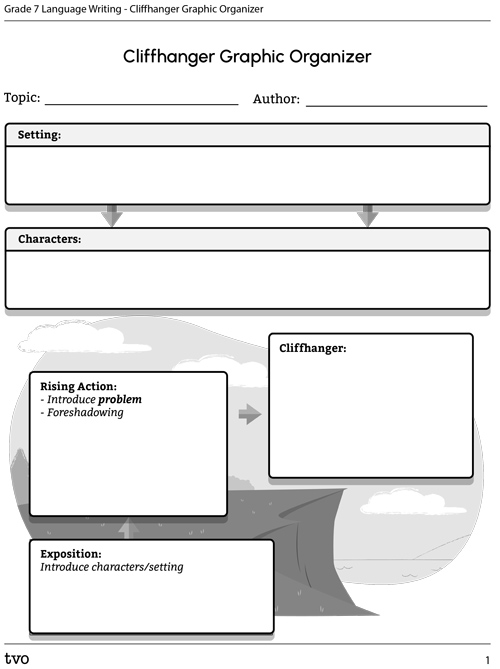Minds On
How does it end?
Read or listen to the following short story:
Hunter and the Storm

Boom! A loud crack exploded from the sky, just outside Maya’s window. A thunderstorm had rolled in from the West. Maya was so busy with her drawings, that she hardly noticed the darkness creeping over her workplace in the attic of her old farmhouse. When she heard the thunder, she jumped out of her seat and began frantically running around the house, closing all of the windows that she had opened earlier to let in the cool, spring breeze.
Hunter, Maya’s one-year old foster dog, followed her around as she closed the windows. Hunter was a 40-pound Huskey mix, with short brown and black fur, a long tail, and a smile that always cheered Maya up. Maya had just recently rescued Hunter and was still getting to know his behaviours and habits. As far as Maya knew, this was the first major thunderstorm that Hunter had ever experienced.
Boom! Another thunderclap, this time so loud Maya swore she felt the house shake. Hunter began to frantically run around the kitchen, barking at the windows, his tail between his legs. The rain came down next. It pelted the old house with a ferocity that Maya had never heard before, the raindrops creating an endless loud noise that made it difficult to hear inside.
The power flickered, and for a moment Maya stood in the kitchen in complete darkness. The lights turned back on and Maya let out a brief sigh of relief. However, Hunter was no longer at her side. She started to call for him, but she knew that Hunter did not know how to come back to his new owner yet. She ran around the house trying to find him. Still no sign of Hunter, she went searching in the back room at the end of the hallway on the first floor. The door was open, which Maya noted as odd, since it was usually closed. She walked into the room and stood in shock. The window was open. She stuck her head out into the pouring rain and there, in the distance, across the field in front of her house, Hunter was running towards the distant forest…
Hunter and the Storm
Reflect
- What do you notice about the ending of this story?
- How does the ending make you feel? Explain why.
When a story ends with a major event where the outcome is unknown, we say that the story ends in a cliffhanger. The story you just read is an example of a story with a cliffhanger – why?
Test Your Skills!
Examples of cliffhangers
Construct a list of examples of stories that you have heard/watched that end in a cliffhanger. These can be examples from any kind of text (eg. TV shows, movies, video games, novels, etc.).

Brainstorm
Create an ending
Brainstorm a list of ideas for how to end the given story, “Hunter and the Storm,” where the main conflict is resolved. Work with a partner or in a small group, if possible. Complete the Brainstorm Organizer in your notebook or use the following fillable and printable document to organize your thoughts about the way you would like the story to end.
Discuss:
- What are some of the common themes to the end of the story?
- In what ways was the given part of the story used to create the new ending?
Action
Writing a cliffhanger
You are going to write a short story that ends on a cliffhanger.

Part 1: Plan your writing
Complete the Cliffhanger Graphic Organizer in your notebook or use the following fillable and printable document to plan out your story. Keep these tips in mind while planning:
- Exposition: This is the start of your story. Introduce the characters and the setting.
- Rising Action: This is where the main conflict or problem of your story is introduced. You can start to add hints about what might be happening at the end. This is called foreshadowing (was there any foreshadowing in the story you read earlier?).
- Cliffhanger: End your story with the character(s) encountering an unexpected problem, but with no resolution to this problem. Try to keep it related to what happened in the rising action.
Part 2: Write your draft
- With your plan for your story ready to go, begin to write your draft. For this learning activity, you can record your ideas using speech to text software, paper, or a computer.
- Refer to your planner when you need to.
- If you need to make changes because of new ideas that come up as you write, consider adding them to the planner and thinking about how your changes might affect the rest of the story.
Part 3: Revise your work
With your finished first draft in hand, it is now time to revise your work. You can do this in several ways:
- Start with a self-revision. Read over your story carefully and out loud if possible. Does the story sound as you intended? Make any necessary changes.
- If possible, swap drafts with a partner. Read their story and share the following:
- Two things that the story did well
- Two things the story could improve on
- If possible, talk to your teacher about your story.
Only after you have made revisions to the structure of your story should you focus on spelling and punctuation. This should be your last step.
- For spelling, read your story backwards, word by word. Check for words that may be spelt incorrectly.
- For sentence structure/punctuation, read your story backwards, sentence by sentence. Is each sentence truly a sentence? Are your sentences varied across the story?
Part 4: Publishing and sharing
After you have made revisions based on feedback, write your final copy. If possible, share your story with peers. After reading, have the audience guess some possible endings to the story based on the facts provided in the story.
Consolidation
Author insights

Student Success
Think-Pair-Share
If possible, exchange completed stories with a partner. Otherwise, use your own story.
- Write an ending for the story that resolves the cliffhanger. Remember to use given details from the story.
- Read both versions of the story.
- Discuss the following questions with your partner and then write your own thoughts on each of the
below questions independently.
- Which version of your story do you prefer – the one with a cliffhanger or the one without? Why?
- Why would an author choose to end a story on a cliffhanger?
Note to teachers: See your teacher guide for collaboration tools, ideas and suggestions.
Reflection
As you read the following descriptions, select the one that best describes your current understanding of the learning in this activity. Press the corresponding button once you have made your choice.
I feel...
Now, expand on your ideas by recording your thoughts using a voice recorder, speech-to-text, or writing tool.
When you review your notes on this learning activity later, reflect on whether you would select a different description based on your further review of the material in this learning activity.

